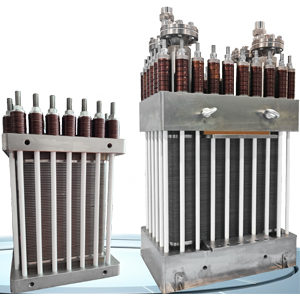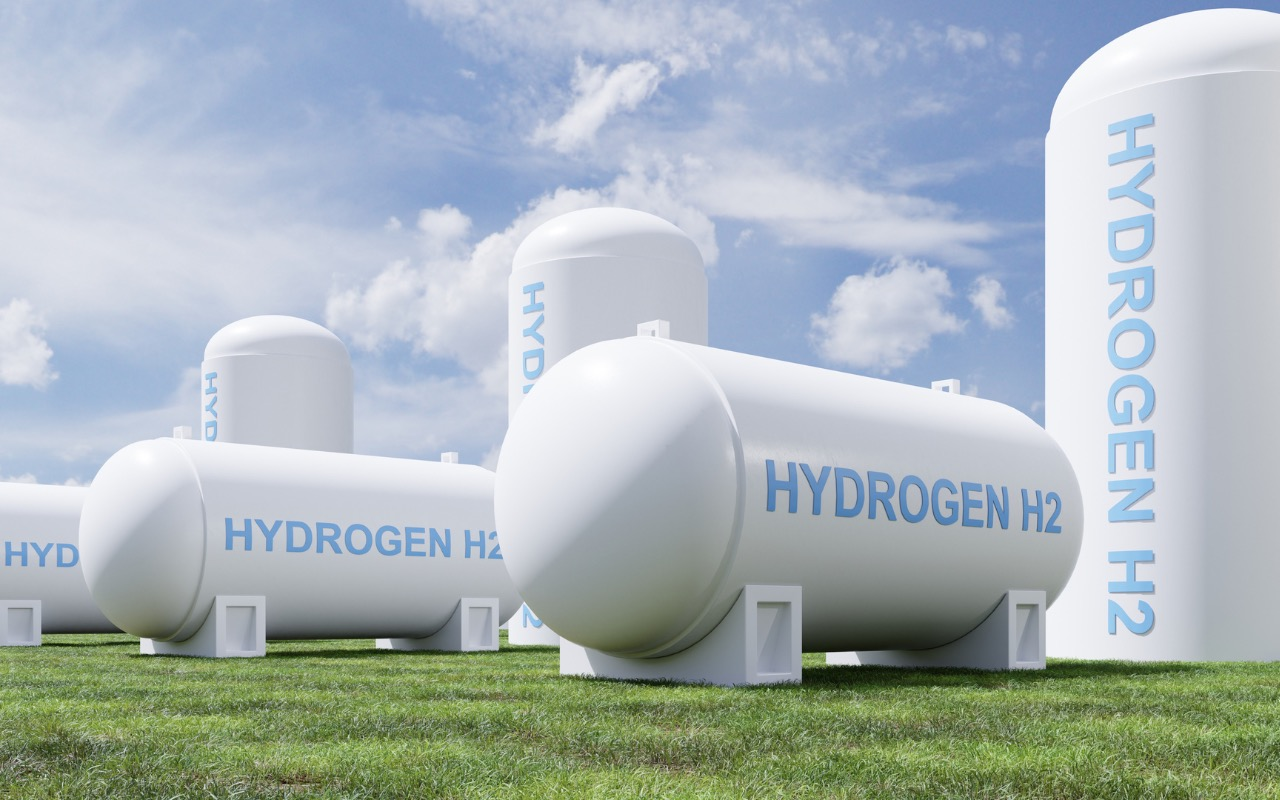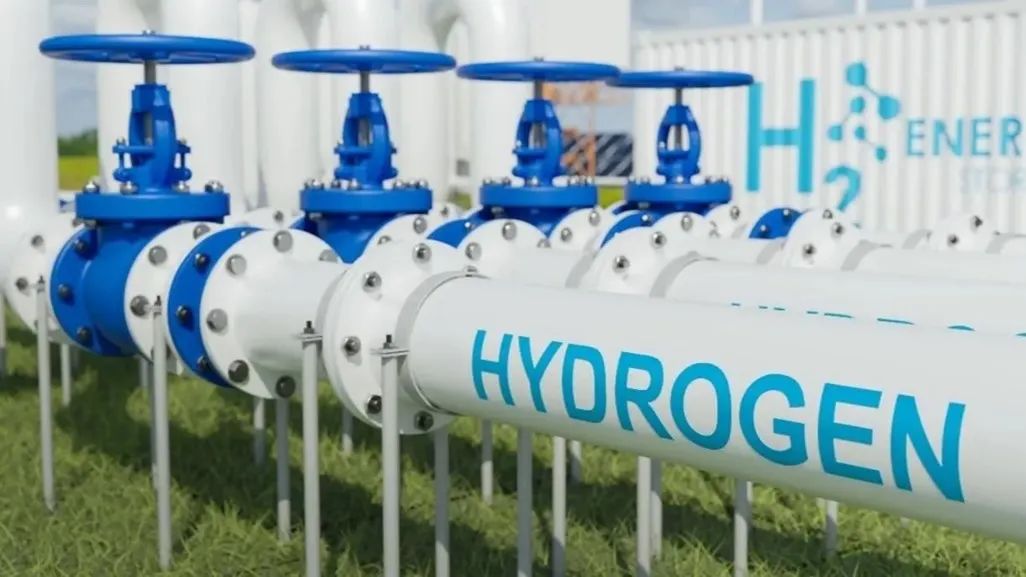Proton Exchange Membrane (PEM) electrolyzers represent a pivotal technology in the transition toward sustainable energy systems. By splitting water into hydrogen and oxygen using electricity, PEM electrolyzers provide a clean and efficient method of producing hydrogen, which can be utilized as a renewable energy carrier. The design and optimization of PEM electrolyzers are critical to improving their efficiency, durability, and cost-effectiveness, making them more viable for widespread adoption. This article discusses the key components of PEM electrolyzers, their design considerations, and strategies for optimization.
1. Overview of PEM Electrolyzers
PEM electrolyzers operate using a solid polymer electrolyte that conducts protons from the anode to the cathode, separates the produced gases, and provides electrical insulation between the electrodes. The core components of a PEM electrolyzer include:
- Membrane Electrode Assembly (MEA): The MEA consists of the proton exchange membrane, catalyst layers, and gas diffusion layers. It is the heart of the electrolyzer where the electrochemical reactions occur.
- Bipolar Plates: These plates distribute water, collect current, and manage heat and gas flow within the electrolyzer.
- Catalysts: Typically made of noble metals such as platinum and iridium, catalysts facilitate the oxygen evolution reaction (OER) and hydrogen evolution reaction (HER).
- Balance of Plant (BoP): This includes all auxiliary components such as water management systems, power supplies, and cooling systems.
The performance of a PEM electrolyzer is influenced by the interplay between these components, making their design and integration critical for achieving high efficiency and durability.
2. Design Considerations for PEM Electrolyzers
2.1 Proton Exchange Membrane
The proton exchange membrane is a key determinant of the electrolyzer’s efficiency and durability. It must exhibit high proton conductivity, low gas permeability, chemical stability, and mechanical robustness. Nafion is the most commonly used membrane material due to its high proton conductivity and chemical stability. However, its high cost and limited performance at elevated temperatures have driven research into alternative materials such as sulfonated poly(ether ether ketone) (SPEEK) and other advanced polymers.
2.2 Catalyst Layers
Catalysts play a critical role in reducing the activation energy required for electrochemical reactions. Iridium-based catalysts are commonly used for OER at the anode due to their high activity and stability in acidic environments. Platinum is typically used at the cathode for HER. However, the scarcity and high cost of these noble metals pose challenges for large-scale deployment. Research efforts are focused on developing non-noble metal catalysts or reducing noble metal loading through advanced fabrication techniques such as nanostructuring.
2.3 Gas Diffusion Layers
Gas diffusion layers (GDLs) ensure uniform distribution of water to the catalyst layer while facilitating the removal of generated gases. They also play a role in thermal and electrical conductivity. The design of GDLs must strike a balance between porosity, hydrophobicity, and electrical conductivity to optimize performance.
2.4 Bipolar Plates
Bipolar plates are responsible for distributing water evenly across the MEA, collecting current, and removing excess heat. Materials used for bipolar plates must exhibit high electrical conductivity, corrosion resistance, and mechanical strength. Graphite and coated metals are commonly used materials, though research into lightweight and cost-effective alternatives is ongoing.
3. Challenges in PEM Electrolyzer Design
Despite their advantages, PEM electrolyzers face several challenges that must be addressed to make them commercially viable:
- High Capital Costs: The use of expensive materials such as noble metal catalysts and Nafion membranes significantly increases the cost of PEM electrolyzers.
- Durability: Degradation of components such as membranes and catalysts over time can reduce performance and lifespan.
- Efficiency: Achieving high current densities while minimizing energy losses is critical for improving efficiency.
- Water Management: Effective water distribution is essential to prevent dry spots in the membrane or flooding in the catalyst layer.
- Thermal Management: Proper heat dissipation is necessary to maintain stable operation at high current densities.
Addressing these challenges requires a combination of material innovation, advanced manufacturing techniques, and system-level optimization.
4. Strategies for Optimization
4.1 Advanced Materials Development
The development of advanced materials is central to improving the performance and reducing the cost of PEM electrolyzers:
- Membranes: Research into alternative membrane materials with higher conductivity, lower cost, and improved thermal stability is ongoing. Composite membranes and hybrid structures show promise in addressing these needs.
- Catalysts: Efforts to develop non-noble metal catalysts or improve noble metal utilization through nanostructuring can significantly reduce costs while maintaining performance.
- Gas Diffusion Layers: Optimizing the porosity and hydrophobicity of GDLs can enhance water management and gas removal.
4.2 Enhanced Manufacturing Techniques
Innovative manufacturing techniques can improve component quality and reduce costs:
- Electrode Fabrication: Techniques such as atomic layer deposition (ALD) and magnetron sputtering enable precise control over catalyst layer thickness and distribution.
- Membrane Coating: Advanced coating methods can enhance membrane durability by protecting against chemical degradation.
- 3D Printing: Additive manufacturing allows for the production of complex bipolar plate geometries that improve flow distribution and reduce material usage.
4.3 System-Level Optimization
Optimizing the overall system design is crucial for achieving high efficiency and durability:
- Water Management Systems: Incorporating advanced water circulation systems can ensure uniform hydration of the membrane while preventing flooding.
- Thermal Management: Heat exchangers and cooling systems must be designed to dissipate heat effectively without adding significant complexity or cost.
- Stack Design: Compact stack designs with optimized flow fields can reduce ohmic losses and improve overall efficiency.
4.4 Integration with Renewable Energy Sources
PEM electrolyzers are often integrated with renewable energy sources such as solar or wind power. Designing systems that can handle variable power inputs while maintaining stable operation is critical for maximizing hydrogen production efficiency.
5. Future Directions
The future of PEM electrolyzer technology lies in continued innovation across multiple fronts:
- Scalability: Developing scalable manufacturing processes will be essential for meeting growing demand while reducing costs.
- Durability Testing: Accelerated testing protocols can help identify failure mechanisms and guide the development of more robust components.
- Integration with Emerging Technologies: Combining PEM electrolyzers with technologies such as hydrogen storage systems or fuel cells can create synergies that improve overall system efficiency.
- Policy Support: Government incentives and funding for research can accelerate the commercialization of PEM electrolyzers.
Conclusion
PEM electrolyzers hold immense potential as a cornerstone technology in the transition to a hydrogen-based energy economy. By addressing challenges related to cost, durability, efficiency, and scalability through advanced materials development, innovative manufacturing techniques, and system-level optimization, significant progress can be made toward making PEM electrolyzers more accessible and economically viable. Continued collaboration between researchers, industry stakeholders, and policymakers will be crucial for unlocking the full potential of this promising technology.
In summary, while significant challenges remain, ongoing advancements in design and optimization provide a clear pathway toward realizing the widespread adoption of PEM electrolyzers as a sustainable solution for hydrogen production.





